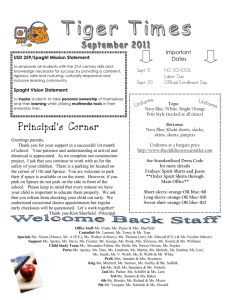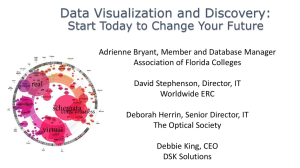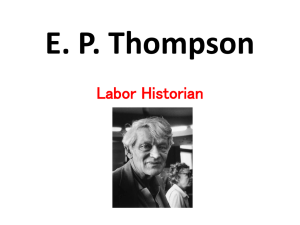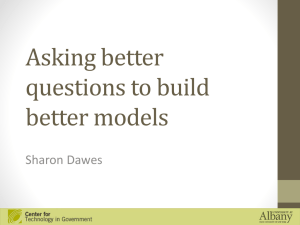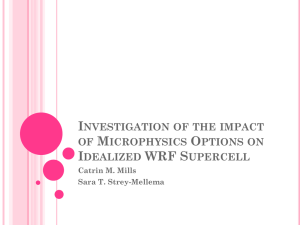Making Meaning for Operations - powerpoint
advertisement
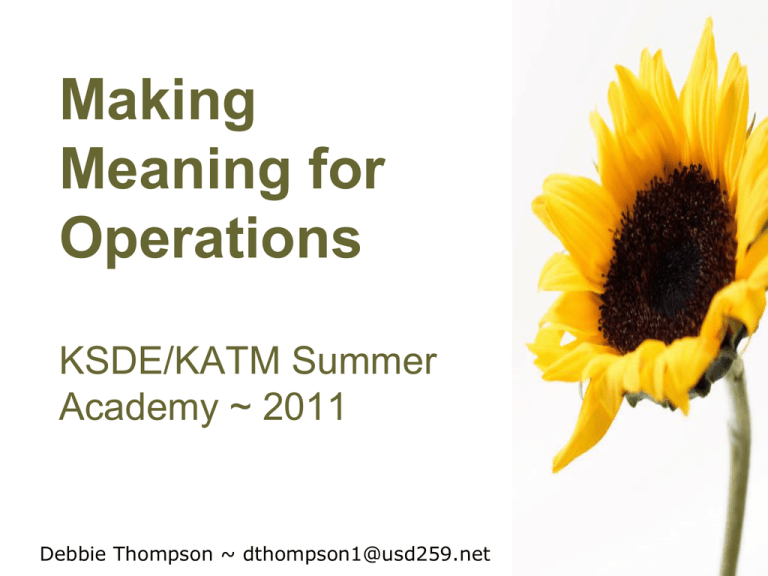
Making Meaning for Operations KSDE/KATM Summer Academy ~ 2011 Debbie Thompson ~ dthompson1@usd259.net Modeling Word Problems Work the 5 problems using either cubes or counters. Do not work with others – yet. Write the equations AFTER working the problem with the manipulatives. When finished discuss your work and question #2 with your group. Debbie Thompson ~ dthompson1@usd259.net Modeling Word Problems Look at the first problem. What equation did you write down? What about the second problem? How many wrote the same equation as shared? A different one? Debbie Thompson ~ dthompson1@usd259.net Modeling Word Problems Let’s look at each problem and analyze the structure of each one. Use Table 1 from the Common Core State Standards to find out which situations each problem illustrates. Debbie Thompson ~ dthompson1@usd259.net Common Addition & Subtraction Situations Add to Result Unknown Change Unknown Start Unknown Put Together/ Take Apart2 Total Unknown Addend Unknown Both Addends Unknown1 Compare3 Difference Unknown Bigger Unknown Smaller Unknown Taken from CCSS pg. 73 – Table 1 Debbie Thompson ~ dthompson1@usd259.net Common Addition & Subtraction Situations What types of problems do you use in your classroom? Discuss with your group what the implications are for instruction. Debbie Thompson ~ dthompson1@usd259.net Connections to the CCSS Critical Areas Kindergarten: . . . modeling simple joining and separating situations with sets of objects, or eventually with equations such as 5 + 2 = 7 and 7 – 2 = 5. 1st grade: . . . developing understanding of addition, subtraction, and strategies for addition and subtraction within 20. . . . model add-to, take-from, put-together, take-apart, and compare situations to develop meaning for the operations of addition and subtraction Debbie Thompson ~ dthompson1@usd259.net Connections to the CCSS Critical Areas 2nd grade: . . . applying their understanding of models for addition and subtraction, and they develop, discuss, and use efficient, accurate, and generalizable methods to compute sums and differences of whole numbers. . . . select and accurately apply methods that are appropriate for the context and the numbers involved. Debbie Thompson ~ dthompson1@usd259.net
